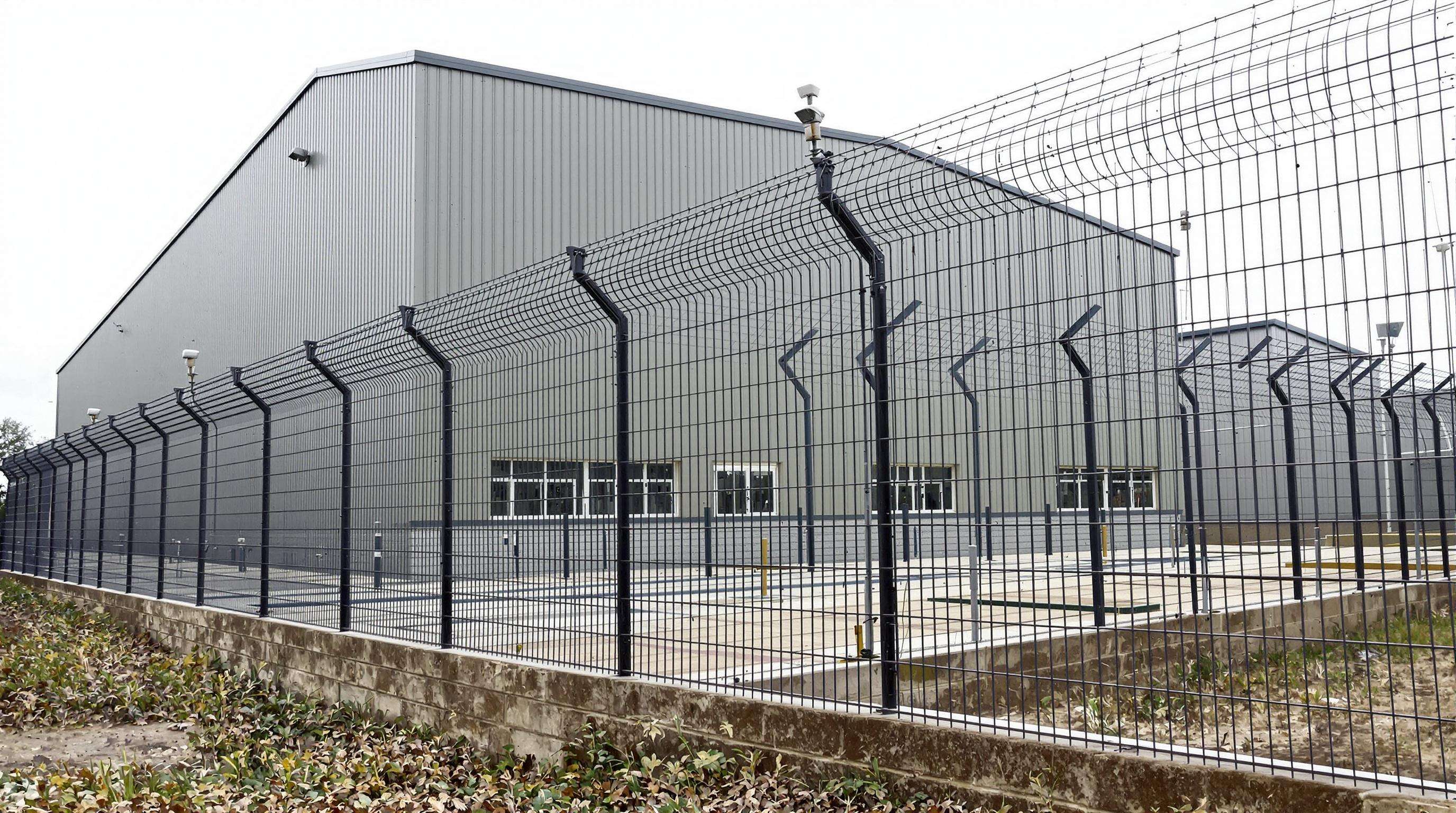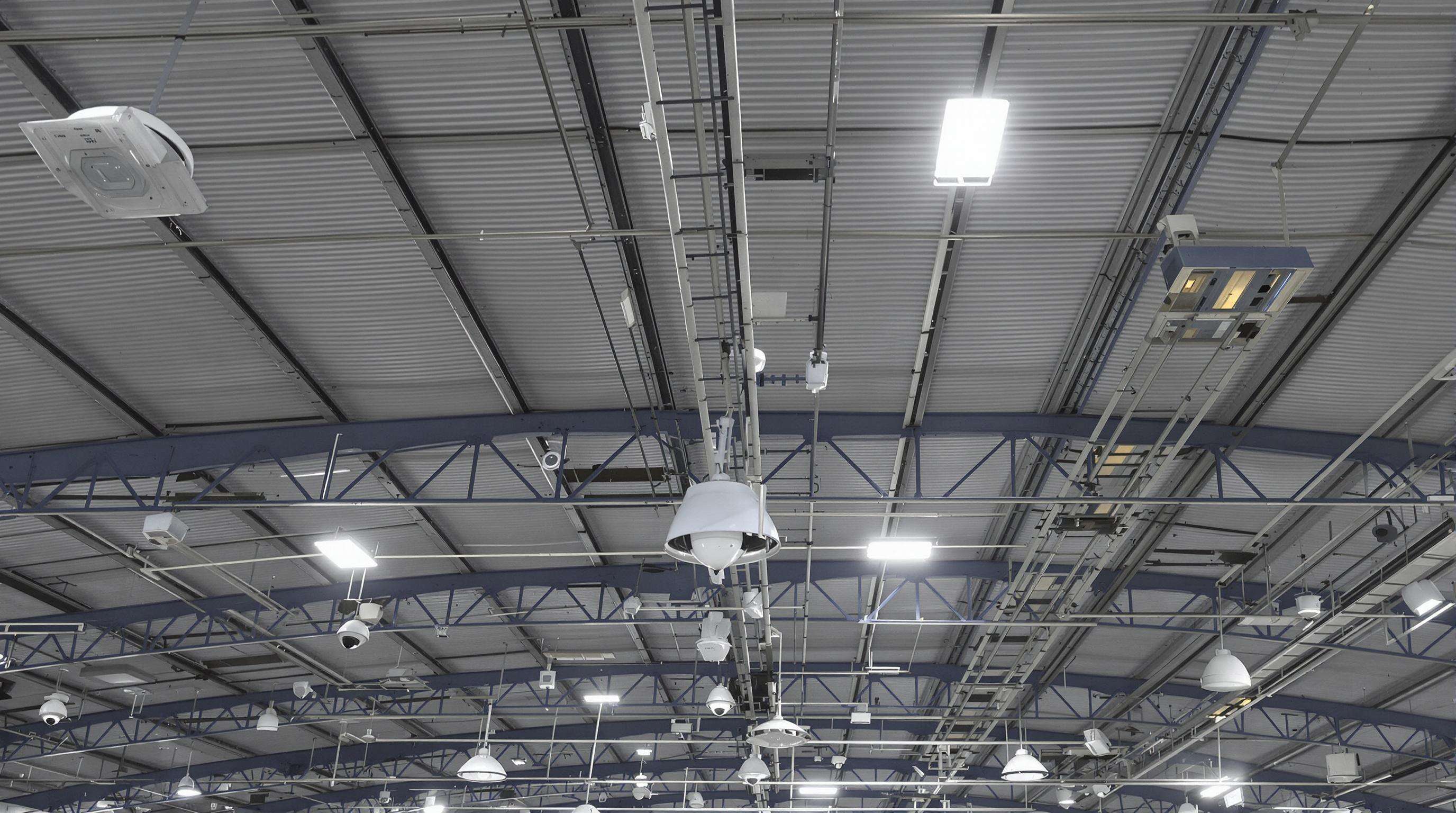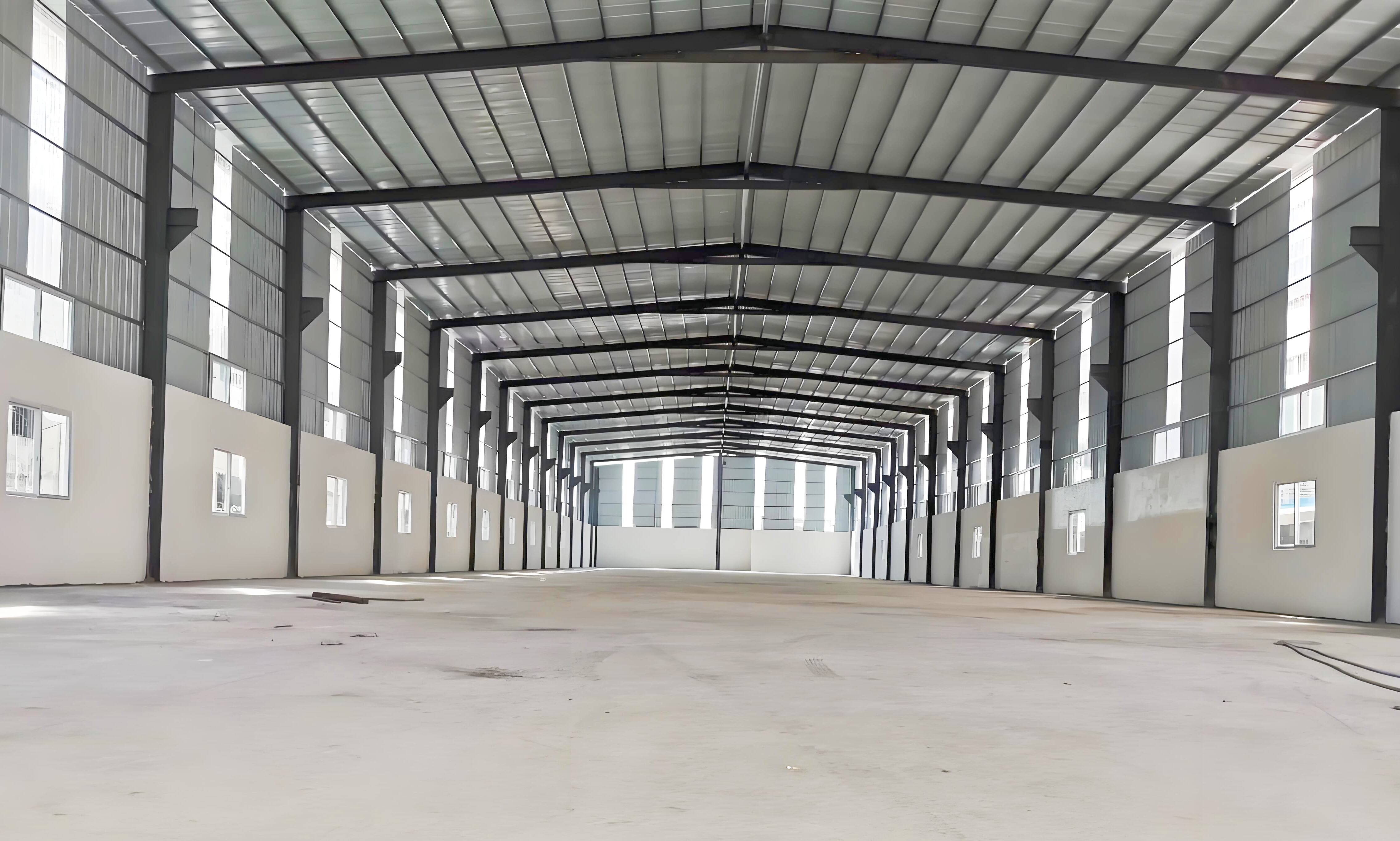Perimeter Security in Prefab Warehouse Design

Prefab warehouses need good perimeter fencing as their main security measure. The fence acts as both a visual warning and actual barrier to stop people from getting in without permission. When warehouses install heavy duty options such as 9 gauge steel mesh or those fancy 3D weldmesh systems, they get two benefits at once. These strong materials keep intruders out while making it hard for anyone to see inside where valuable goods might be stored. According to recent research published in Security Journal back in 2024, places with stronger fences saw about 65 percent drop in break ins compared to others. Modern security fences come equipped with things like anti climb surfaces and foundations designed so nobody can just dig underneath them. All these features work together to guide would-be thieves straight to security cameras and guards stationed at proper entry points instead of letting them wander around unnoticed.
Role of Perimeter Fencing in Securing Entry and Vehicle Access Points
Security fencing directs both people and vehicles through specific entry points where access control systems check who's allowed in. When warehouses install these high security gates along with those hydraulic bollards, they cut down on tailgating incidents by around three quarters according to last year's Logistics Security Report. The smartest setups position these gates so no one can sneak past them from hidden angles. Crash resistant barriers go into areas where accidents might happen most often. And many facilities now prefer modular fence sections because they make it easier to expand security as business needs change over time.
Integration of Prefabricated Security Booths and Access Control Structures
Security booths that are prefabricated can be set up quickly at building entrances where central monitoring is needed. The modular design comes with all sorts of tech built in already including things like biometric scanners for fingerprints, systems to track visitors as they come and go, plus live video feeds from cameras around the area. All these components work together to make managing who gets in much smoother than traditional methods. Some models even have license plate readers and facial recognition software that check vehicles and people against databases before allowing them through the gates. This kind of proactive screening cuts down on chances someone might slip past without proper authorization.
Warehouse Guardrails and Barriers for Physical Threat Mitigation
Guardrails that can withstand impacts help keep structural columns and important equipment safe from those unexpected vehicle crashes that actually account for most warehouse break-ins according to OSHA stats from last year. These barriers do several things at once really. They create protected areas around expensive stock, steer forklifts away from walls where damage would be costly, and put up solid concrete defenses where warehouses border public roads. The whole system works like multiple layers of protection, making it harder for anyone trying to get in without permission since they have to pass through these controlled entry points first. Most warehouse managers find this approach makes their facilities much safer overall while also reducing repair costs down the road.
Advanced Surveillance Systems for Real-Time Monitoring

CCTV and Electronic Security Systems in Prefab Warehouse Infrastructure
Modern prefab warehouses utilize AI-powered CCTV systems with 360° coverage and license plate recognition, cutting unauthorized entry attempts by 63% compared to passive monitoring (industry data 2024). These systems are augmented with motion-activated floodlights and thermal imaging to detect breaches in low-light or adverse weather conditions, ensuring continuous perimeter surveillance.
Safety Monitoring Systems for Early Risk Detection
AI-driven behavioral analytics detect anomalies such as loitering or irregular access patterns 70% faster than manual monitoring. Environmental sensors monitor for temperature spikes, gas leaks, and structural vibrations, automatically triggering alerts when thresholds exceed NFPA 72 safety standards, enabling rapid intervention.
Integration of Surveillance with Alarm Systems for Immediate Response
Top-tier facilities synchronize surveillance feeds with centralized alarm panels, allowing security teams to verify threats via live video before dispatching responders—reducing false alarm costs by $18k annually per site (2023 security operations report). During confirmed breaches, automated lockdown protocols seal high-value storage areas, minimizing exposure and response time.
Smart Access Control and Inventory Protection
Securing Entry and Vehicle Access Points with Smart Access Control Systems
Security at busy spots such as loading docks gets much better when smart access systems come into play. These include things like RFID tags, fingerprint scanners, and secure keypads that people punch in codes on. What they do basically is keep out anyone who shouldn't be there while keeping track of everyone trying to get through. A recent report from the Materials Handling Industry back in 2023 showed something pretty impressive actually - facilities that had these layered security approaches saw around 72 percent fewer cases where someone got in without permission compared to old fashioned locks and keys. When it comes to trucks and delivery vans, automatic gates paired with cameras that read license plates make sure only those on the approved list can roll right in. Some companies even have special software that flags suspicious patterns or repeated failed attempts, which helps catch potential problems before they become real issues.
Inventory Tracking Systems for Enhanced Accountability
When companies install IoT sensors along with barcode scanners, they get instant updates on where inventory stands at all times. Every single item leaves a paper trail so to speak, which makes auditing much easier later on. The visibility these tools bring cuts down on lost stock significantly. According to Logistics Tech Review from last year, top performing warehouses saw around 34 percent fewer missing or stolen items once they started using this technology. Warehouse managers love how centralized dashboards highlight problems like boxes sitting in areas without proper security measures. These alerts let staff jump into action before small issues become big losses.
Case Study: Reducing Theft in a Logistics Hub Using Integrated Access Controls
One European logistics company cut their yearly losses by almost two million dollars after they combined facial recognition entry with motion activated cameras throughout all their prefabricated warehouses. Their security setup caught people trying to get in when they shouldn't have been there, and theft dropped by nearly half over just six months time. What this shows is that combining different security layers doesn't just stop bad stuff from happening it also gives companies solid evidence if something does go wrong anyway.
Structural Integrity and Compliance in Prefab Warehouse Security
Modern prefab warehouses experience 79% fewer structural failures than traditional builds due to engineered anchoring systems and strict compliance with safety standards. This combination of physical resilience and regulatory adherence ensures security measures are built on a stable, code-compliant foundation.
Anchoring Racks and Shelving to Prevent Collapse and Unauthorized Access
Storage systems stay firmly attached to walls and floors thanks to steel anchoring brackets, which cut down on tipping risks from bad loading practices by around 90%. The shelves with cross bracing and solid welds not only hold up better under stress but also make it harder for anyone trying to break into or take apart the rack system. When dealing with pallet storage, most facilities install heavy duty concrete bases that go well below surface level. These deep footings stop those annoying shifts when forklifts move around, keeping everything stable even during busy warehouse operations.
Compliance with Safety Certification Standards in Prefab Warehouse Construction
When it comes to prefab components, they need to hit those ISO 9001 manufacturing tolerances plus satisfy local building codes for seismic activity and wind loads, particularly in areas prone to earthquakes or hurricanes. Fire safety is another big concern too. Standards like FM Global Class 6035 insist on non-burning materials for wall panel insulation, whereas OSHA regulation 1910.176 requires rack systems to clearly show their weight limits so workers know what they can safely handle. Before anyone gets the green light to occupy a space, third party inspectors check every single weld joint on structural frames to make sure there's complete penetration throughout. This extra step might seem tedious but it pays off down the road when buildings remain safe and compliant year after year without surprises.
Integrated Security Infrastructure for Holistic Protection
The Role of Integrated Security Systems in Comprehensive Prefab Warehouse Protection
When security systems bring together access control, cameras, and alarm systems all on one network, they can cut down response times significantly. Facilities that have these connected systems report incidents getting handled up to 40% faster according to the NSF Industrial Report from 2024. The way these systems work is pretty clever actually. If someone tries to get through a door without proper credentials, the cameras automatically zoom in on that spot while sending out alerts to the security team. Smart software running behind the scenes looks for strange behavior patterns too. This means guards can jump into action before anything bad happens, especially important around places where valuable goods are stored or loaded onto trucks.
Trend: Unified Security Platforms Combining CCTV, Alarms, and Access Logs
Many top logistics companies have started using all-in-one security systems that bring together camera feeds, motion sensors, and entry logs onto single screens. The best part? These systems send instant notifications when something happens - red warnings mean actual breaches while yellow flags point to odd behavior worth checking out. Operators can then match who entered what area with actual video clips to confirm if everything checks out. Cloud based storage keeps all these records safely encrypted, which makes it much easier for warehouse managers to prepare their compliance reports. This setup saves tons of time during audits and helps spot problems before they become big headaches down the road.
Strategy: Designing Security Infrastructure in Prefab Warehouses from the Ground Up
When security gets built right into the construction phase instead of added later, companies can save around 30% according to Material Handling Institute data from last year. There are several important things to consider here. First off, running those conduit lines through wall panels while the building framework is still being planned makes life much easier down the road. Then there's dividing up the facility itself based on different levels of risk areas. And let's not forget about positioning those surveillance cameras so they're spaced roughly 25 feet apart throughout modular spaces. Having all those electrical conduits pre-installed along with stronger walls where access panels will go basically removes the need for making changes after everything's already built. Getting engineers and security experts working together from day one really pays off too. They end up finding better spots for cameras and getting those equipment racks positioned just right without wasting time or money on guesswork.
Balancing Cost vs. Coverage in Comprehensive Security Integration
| Investment Tier | Security Coverage | Cost Impact (Compared to Baseline) |
|---|---|---|
| Essential | Perimeter + Entry Points | Baseline |
| Advanced | + Inventory Zones | 25-30% increase |
| Premium | Full Integration | 45-50% increase |
Risk level should guide investment: high-value inventory justifies premium coverage, while bulk storage may benefit from tiered protection. Strategic scaling—prioritizing choke points first—allows medium-risk warehouses to achieve 90% coverage at 65% of premium-tier costs through optimized CCTV density and tiered access permissions, minimizing redundancy without compromising security.
FAQs
What are the main components of prefab warehouse security?
Key components include perimeter fencing, access control systems, prefabricated security booths, guardrails and barriers, advanced surveillance systems, smart access controls, and inventory tracking systems.
Why is it crucial to integrate security during the construction phase of prefab warehouses?
Integrating security during construction saves costs and ensures efficient placement of critical systems, like surveillance cameras and electrical conduits, reducing the need for modifications later.
How do modern surveillance systems improve prefab warehouse security?
Advanced surveillance systems utilize AI-driven analytics for real-time monitoring, reducing unauthorized entry attempts by 63% and providing rapid detection and response to security breaches.
Table of Contents
- Perimeter Security in Prefab Warehouse Design
- Advanced Surveillance Systems for Real-Time Monitoring
- Smart Access Control and Inventory Protection
- Structural Integrity and Compliance in Prefab Warehouse Security
-
Integrated Security Infrastructure for Holistic Protection
- The Role of Integrated Security Systems in Comprehensive Prefab Warehouse Protection
- Trend: Unified Security Platforms Combining CCTV, Alarms, and Access Logs
- Strategy: Designing Security Infrastructure in Prefab Warehouses from the Ground Up
- Balancing Cost vs. Coverage in Comprehensive Security Integration
- FAQs


